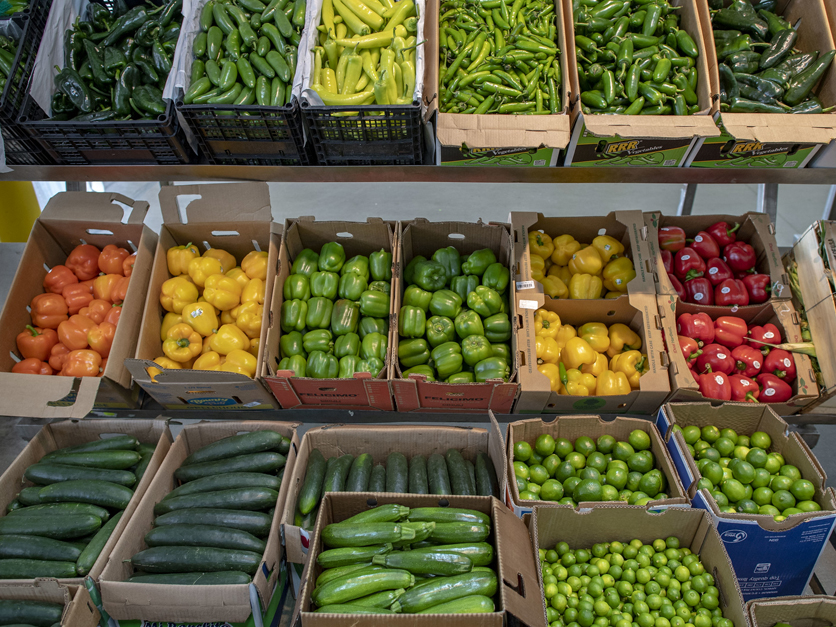Specialty crop importers who rely on USDA's daily data report on foreign products arriving at U.S. ports of entry say it paints a confusing picture that makes it difficult to negotiate prices with foreign suppliers.
The Agricultural Marketing Service's Daily Movement report shares data every day on the number of truckloads of a wide range of commodities crossing into the U.S. from foreign countries.
Before 2021, the report relied on numbers AMS pulled together through reporting mechanisms that varied based on the port, said Allison Moore, executive vice president of the Fresh Produce Association of the Americas.
But then the agency began getting this information from the Department of Homeland Security and Customs and Border Protection through the Automated Customs Environment data system because it provided a "more robust, comprehensive data set than previous methods,” USDA spokesman Allan Rodriguez said.
“All products crossing the border must be reported through movement data including volumes of products by Harmonized Tariff System (HTS) codes within 10 business days of entering the United States, which gives a highly accurate and static data set for Market News to utilize to generate the movement/Daily Crossing reports,” Rodriguez said.
Moore said while the new system provided the agency with a more standardized way to collect data, it made it more difficult for producers to see what was happening on a day-to-day basis. Under CBP rules, shippers and their customs brokers have 10 days to finalize data entries for shipments crossing the border.
 Amanda Horney, London Fruit
Amanda Horney, London Fruit“Any type of negotiating power we had, they took it away the day they switched over to this new system,” said Amanda Horney, business development manager at London Fruit, which sources fruit from Mexico, Peru and Argentina. She uses the reports to negotiate prices with foreign suppliers for products like limes and mangoes.
Moore said it appears that USDA is not getting crossing data until after shipments are finalized, which means shipments counted in the report may not actually be coming in on the day they are listed; rather, they could have arrived earlier in the 10-day window.
This is a problem for importers trying to negotiate prices for limes, avocados and mangos, though it may extend to those that purchase other types of commodities as well, said Dante Galeazzi, the president and CEO of the Texas International Produce Association.
Under general supply and demand theory, prices tend to go up in scenarios where supply is down and demand is up, Galeazzi said. Conversely, prices tend to go down when there’s a large supply and no demand.
It’s easy to be “in the know” about what’s happening in Washington, D.C. Sign up for a FREE month of Agri-Pulse news! Simply click here.
But piecing together that puzzle is more difficult if importers don’t have visibility into the supply entering the U.S. at the border, especially when it comes to the price of imported produce, which can fluctuate daily, Galeazzi said.
“You can see very quickly how now, our folks who are responsible for pricing, have lost one of the biggest tools in their toolbox,” Galeazzi told Agri-Pulse.
USDA's Rodriguez said AMS is “aware of the industry's concerns” about the report and that AMS and CBP are in discussions "to identify possible solutions.”
CBP did not provide a response to an Agri-Pulse inquiry by press time.
Galeazzi said he has noticed “more examples” of lime markets going into “excessive pricing periods” in the past two years than at other points in the last 10 years. For example, he said during most times, a 40-pound box of limes would typically cost around $20, though it’s now “common that every other month” the same box of limes will reach prices of $50 to $70.
The costs add up for importers who are buying thousands of boxes of limes, he said. London Fruit is one of the companies that have seen the effects.
 Allison Moore, Fresh Produce Association of the Americas
Allison Moore, Fresh Produce Association of the Americas“We lost thousands of dollars, but I know it hurt other people a lot more than it hurt me,” Horney told Agri-Pulse. “I’m a smaller player in the game. Some of the bigger guys, they were hurt a lot by this.”
The new reports, London Fruit’s Horney said, provide “no visibility” into what lime shipments cross during weekends. She has also noticed “large data dumps” on Wednesdays, Thursdays and Fridays, likely due to numbers being marked in the system as completed.
The groups have brought the issue to both agencies, as well as members of Congress. Moore, however, said “the ball is really in CBP’s court.”
CBP does receive some preliminary crossing data immediately — it’s just not finalized, Moore said. She believes a solution would be to find a way for CBP to share this preliminary data with AMS to be used in the report, rather than just finalized data.
“It does make more sense to be able to use the CBP data,” Moore said. “But that data has to be available more real-time to the partner government agency, which in this case is USDA.”
Another option would be to go back to the USDA’s pre-2021 reporting system, Galeazzi said.
“We’ll take either one of those,” he said of both options. “What we need is that timely, quality information of the figures that are crossing and entering so we understand the supply.”
For more news, go to Agri-Pulse.com.


